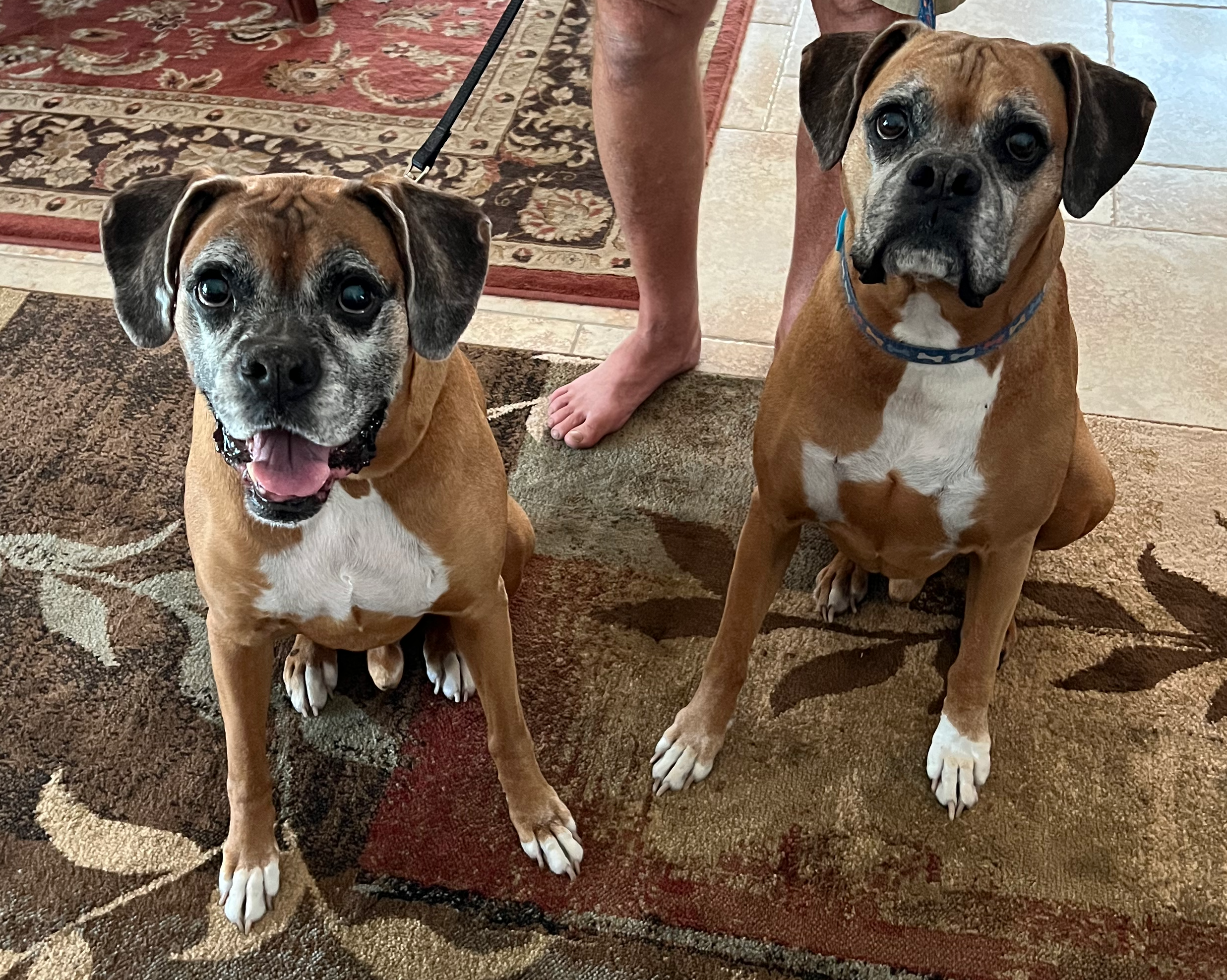
Has your vet mentioned that your dog might have Degenerative Myelopathy? Or has your dog been diagnosed with degenerative myelopathy?
I’m sure you have already googled DM in dogs and probably became quite scared the more you learned about this condition. Although it is scary and you may not know how to help your best friend, we are here to help!
We help dogs with degenerative myelopathy get around better, easier, and help to delay the progression of their disease! Please continue to read below for more information about how YOU can help your pup.
Let’s get started by understanding what is degenerative myelopathy in dogs:
Degenerative Myelopathy is a devastating disease that affects many dogs, particularly larger breeds. It is a progressive neurological disorder that causes the loss of coordination and mobility in dogs.
The disease primarily affects the spinal cord and nerves and results in a gradual deterioration of the nerve fibers that control movement.
Unfortunately, there is currently no cure for degenerative myelopathy, but there are treatment options available to help manage the symptoms and improve the quality of life for affected dogs.
What breeds are most commonly diagnosed with degenerative myelopathy?
German shepherds, Boxers, Corgis, Rhodesian Ridgebacks, Chesapeake Bay Retrievers, and Irish setters.

Causes and Symptoms of Degenerative Myelopathy in Dogs:
The exact cause of degenerative myelopathy in dogs is unknown, but research suggests that it may be related to a genetic mutation that affects the production of proteins in the spinal cord.
Many people explain that they first start to hear their dog scuffing a nail regularly on their walks, it might progress to slightly dragging one leg, or one leg just seeming weaker than the other. Sometimes the dog will seem unsteady on their feet or they will be slipping and sliding on hardwood or tile surfaces.
Depending on many different factors the disease can progress quickly to the point of the dog really struggling to stand and walk. In other dogs, the disease progresses much slower and you notice a more gradual decline in your dog’s ability to get around.
As the disease progresses, the dog’s front legs may also become weak and uncoordinated, and they may experience difficulty breathing due to weakness in the respiratory muscles. In some cases, the disease can also affect the dog’s ability to control their bladder and bowel movements.
How do I know if My dog has DM?
Diagnosing degenerative myelopathy in dogs can be challenging, as the symptoms are often similar to those of other neurological conditions, such as IVDD. Early detection and management of the disease can help improve the dog’s quality of life and slow down the progression of the disease.
The first step in diagnosing the disease is a physical exam by your vet. This may include blood tests, x-rays, and an MRI scan. If the vet suspects degenerative myelopathy, they may also perform a genetic test to confirm the diagnosis. This test is easily done by sending a hair follicle or blood sample to a lab for testing.
If your dog presents with the symptoms described and is one of the breeds listed, it is important to have this test to rule in or rule out DM. That way, you can find the best treatment for your pet.
The UC Davis Veterinary School offers tests kits that you can order online to test your dog for DM: https://vgl.ucdavis.edu/test/degenerative-myelopathy.
You can also visit the University of Missouri website to order the test online and find out more information about DM: https://cgd.missouri.edu/?page_id=326
What Can I Do to Help My Dog with DM? Treatment for dogs with degenerative myelopathy
Although there is no cure for degenerative myelopathy in dogs, there are several treatment options available that can help manage the symptoms of the disease and improve your dog’s quality of life. Some of the most common treatment options include:
- Assistive devices: Specialized devices such as slings and wheelchairs can help support the dog’s weight and enable them to move around more easily.
- Physical therapy and rehabilitation: Physical therapy and rehabilitation can help improve the dog’s mobility and strength, and may include exercises such as swimming, walking on a treadmill, and balance training. The most important part of exercise is being consistent, BUT not overdoing it. If you over do exercise with your dog, you can actually make the disease progress faster.
- Acupuncture: acupuncture helps improve the communication from your dog’s spinal cord and nerves to the muscles. This may be the most important part of treatment for dogs with DM because the communication between the nerves and muscles is exactly what is effected with this disease.
- Medications: There are several medications available that can help manage the symptoms of degenerative myelopathy, including anti-inflammatory drugs and pain relievers. DM is not a painful condition in itself, however many dog experience pain from falls, slips, and compensation in trying to get around.

It is important to note that while these treatments can help manage the symptoms of degenerative myelopathy, they cannot stop the progression of the disease. Therefore, it is essential to work closely with a veterinarian and a rehabilitation specialist to develop a comprehensive treatment plan that addresses your dog’s individual needs and provides the best possible quality of life.
Most of our clients also find it very helpful to join support groups so that they can talk with other people that have dogs with DM. You can follow the facebook link: https://www.facebook.com/groups/DMDogs/
Degenerative Myelopathy is a devastating disease that affects many dogs, particularly those of larger breeds. While there is currently no cure for the disease, there are several treatment options available that can help manage the symptoms and improve your dog’s quality of life.
If you suspect that your dog has degenerative myelopathy, the BEST thing you can do right now is to get your dog evaluated by your vet and tested. That way, you can be confident in knowing what you are dealing with which helps to create a targeted treatment program to help your dog live a long and happy life!
If you have any questions, concerns, or want to discuss how rehab or acupuncture can help your pet, please click the link below to fill out a short form. You can also check out our Degenerative Myelopathy page for more information. We can’t wait to hear from you and your pet!